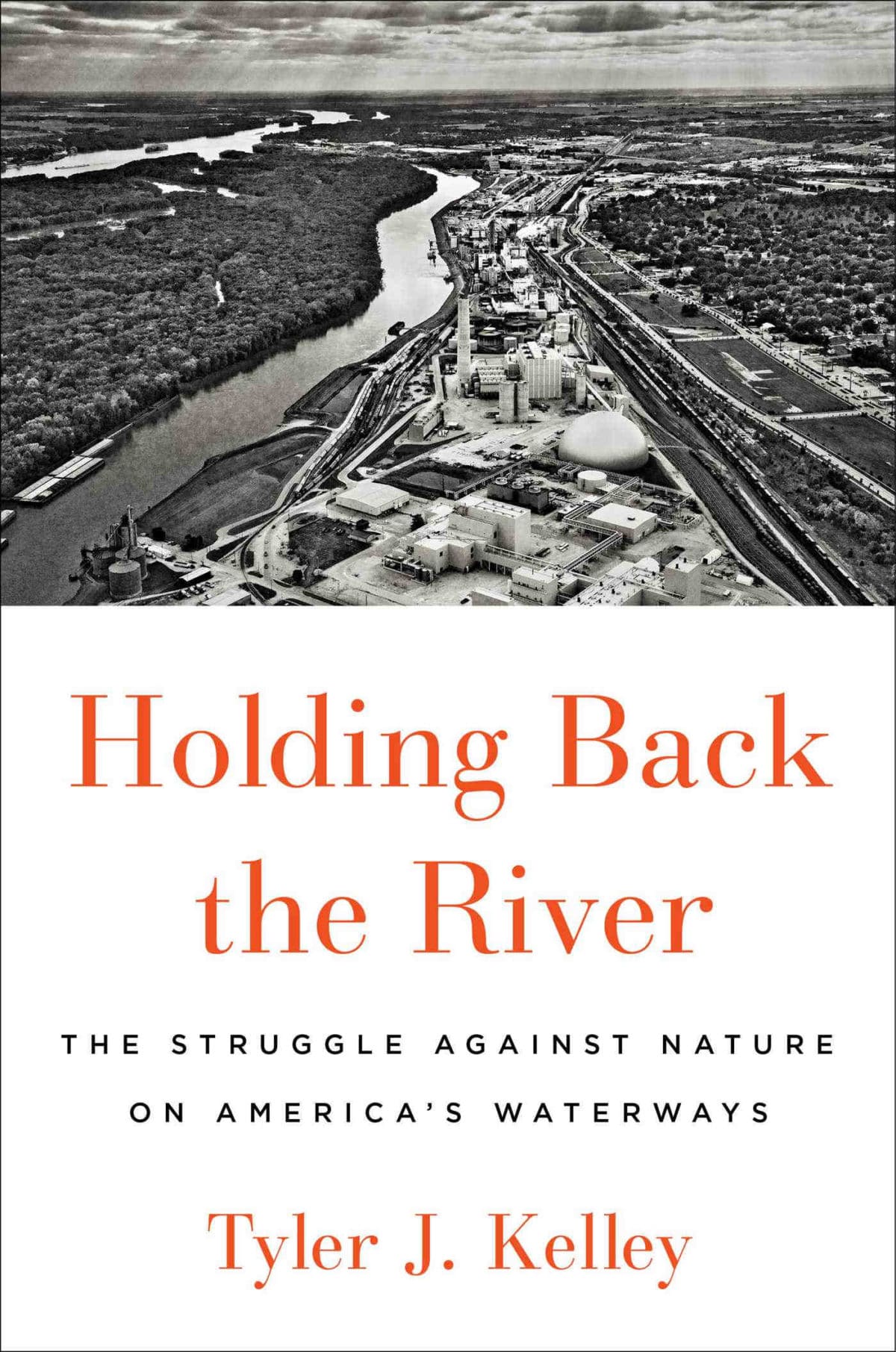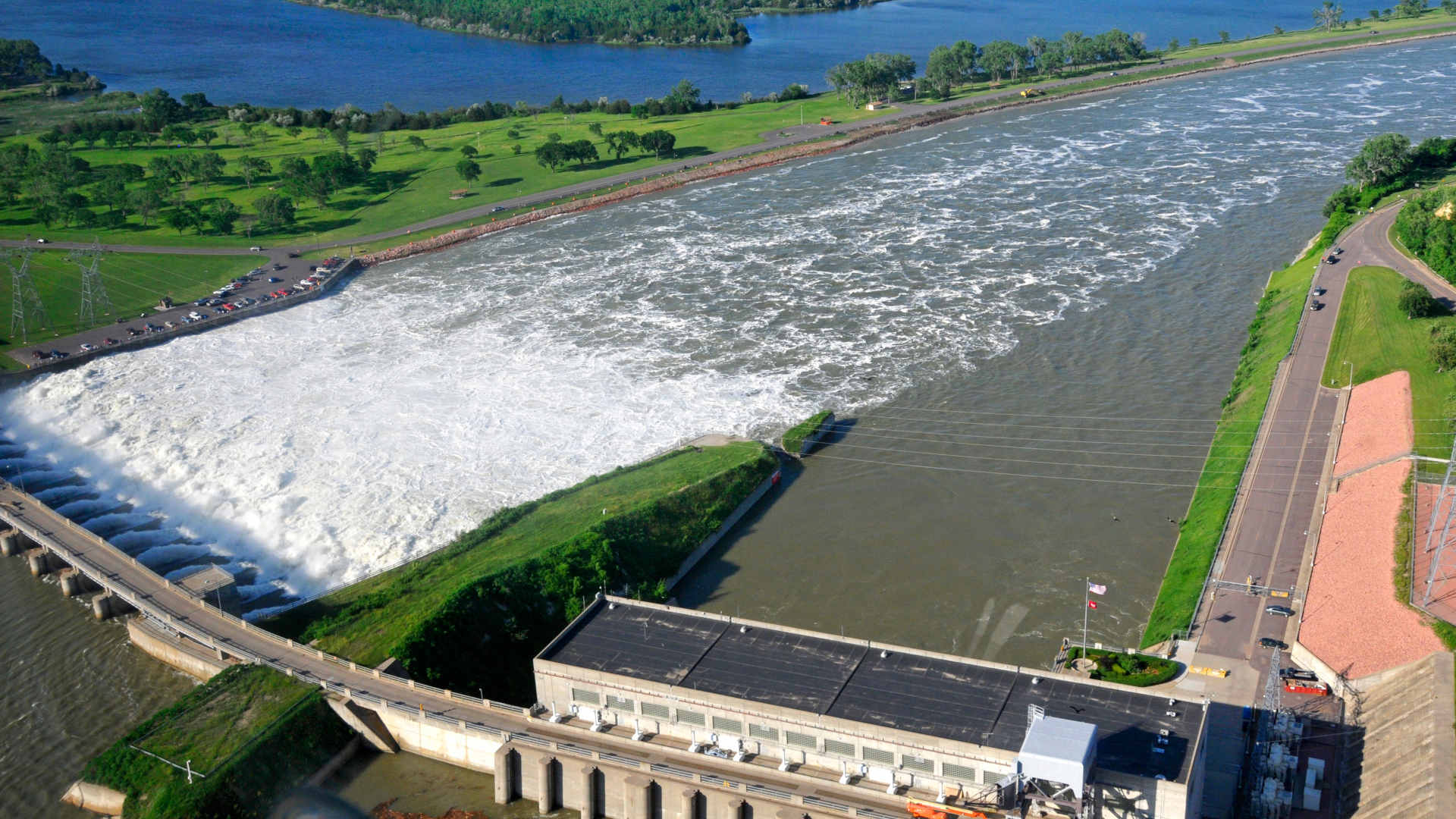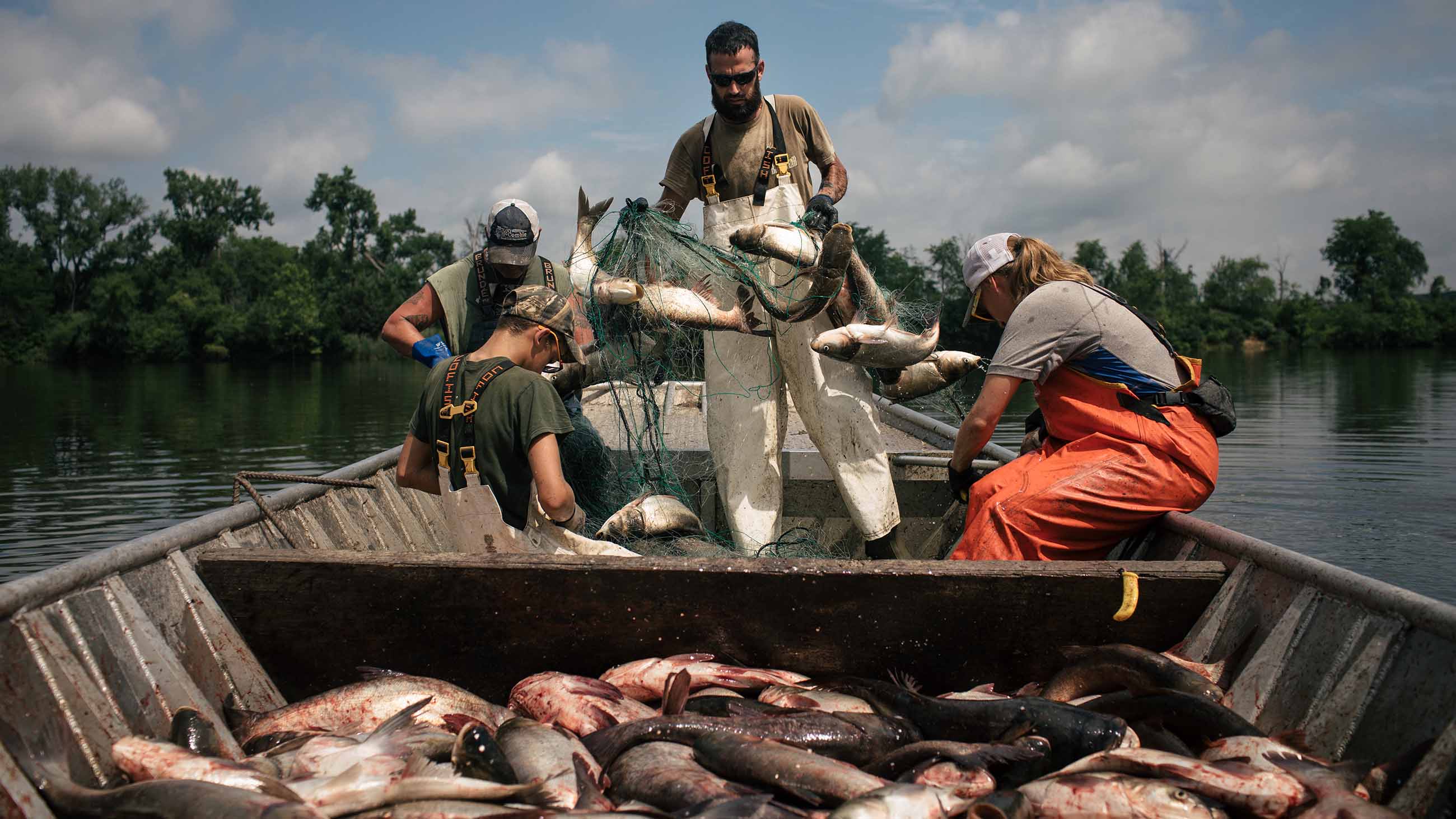Journalist Tyler J. Kelley’s debut book, “Holding Back the River: The Struggle Against Nature on America’s Waterways,” was born of a rescue. Kelley and a friend were moseying down the Ohio River in a small boat when their motor went kaput downstream of Lock and Dam No. 53, once the country’s second busiest. A worker spotted the pair and towed them back toward the dam, which rises from the river to form a roaring curtain of whitewater. There, Kelley met the lockmaster and his mechanics, who repaired their motor and refueled their tank before sending them off. “I had glimpsed a world, and I couldn’t stop thinking about it,” Kelley writes.
The product of Kelley’s fixation is a spirited tour of America’s great rivers — the Mississippi, Missouri, and Ohio — and the structures built to tame them. It’s a rigorously researched and empathetic account of those whose lives and work are linked to the rivers. Myriad farms, cities, and industries depend on them. Annually, $220 billion dollars’ worth of goods flow through the nation’s waterways. But they are sorely underfunded and outdated. The American Society of Civil Engineers rated U.S. waterways a “D” across the board.

BOOK REVIEW — “Holding Back the River: The Struggle Against Nature on America’s Waterways,” by Tyler J. Keley (Simon & Schuster, 256 pages).
As climate change raises the pressure and politicians lament our “crumbling infrastructure,” Kelley sounds the alarm. “A long line of American leaders from both parties has lacked the will, power, or imagination to build what the country needs,” he writes. Kelley explores how we got here, and why it’s time to rethink the relationship with our rivers.
In dry seasons, most of America’s rivers would naturally slow to a trickle. This plagued Lewis and Clark’s westerly expedition, which frequently stopped to shoulder their boats across the so-called riffles. Early on, they recognized a river’s quirks were incompatible with the country’s burgeoning commerce. In the 1820s, Congress ordered the Army Corps of Engineers to improve navigation on the Ohio and Mississippi, which kicked off the ubiquity of dams, and later that century, they assumed flood control duty. The Corps has since been tasked with managing droughts, river wildlife, the sediment that rushes through the river — all, Kelley says, “events once written off as acts of God.”
Dams block the flow of water, creating a pool deep enough for boats; locks work like water elevators that shuttle boats from pool to pool. Together, they enable the steady transport of goods. Not so reliable when the nation’s busiest, shabbiest dams — No. 52 and 53 — had been waiting to be scuttled since 2001, when a state-of-the-art dam was supposed to replace them. (This would not happen until 2018.) We meet the stressed workers operating irascible, hole-ridden locks. The impacts of delays are dire. Up to 60 percent of U.S. farm exports ride the waterways. One boat’s delayed grain shipment means chickens at the poultry plant downstream go hungry.
Levees stand high on the riverbank, running parallel to the river to contain water and keep land dry. Kelley visits the southeastern corner of Missouri, home to the Birds Point-New Madrid Floodway. We meet those who farm the rich floodplains, and those who live in the small Black community Pinhook. (When the village was established in the 1940s, the Black farmers weren’t permitted to buy land on high ground.) In 2011, unprecedented rainfall and warm temperatures forced the Corps to make an impossible, still-contentious decision. They blew a levee and flooded the plain — the first time they’d done so since 1937 — in order to relieve pressure on the Mississippi. The blast released the equivalent of four Niagara Falls upon homes and land.
In the final chapter, Kelley turns his attention to sediment. Thousands of dams were erected in the first half of the 20th century, and most were not designed to manage the silt and sand that rivers funnel through the continent. In South Dakota, backed-up river silt has converted farmland to bog, while in Louisiana, excess earth has transformed cypress swamps into oak forests. Dams on the Missouri and Arkansas Rivers have slashed the Mississippi’s supply of land-building sediment. That, combined with erosion and sea level rise, is erasing Louisiana’s coast.
Climate change stresses these aging systems. As more rain pours into the rivers, Kelley says we “will need more floodways, not fewer, operated more often, not less.”
Reading Kelley, one gets the sinking feeling that the solutions are fraught. Despite the heartache of the 2011 Missouri flood, he suggests it was for the greater good. One person’s flood is another’s relief: The flood reduced risk of levee failures and damage to dozens of towns elsewhere. That said, Kelley notes, what follows these events is hardly justifiable. He references sociologist Junia Howell, who found after disasters like the Birds Point-New Madrid flood, relief from the Federal Emergency Management Agency drives inequity. Designed to restore property rather than rebuild communities, FEMA “rewards wealthy more than poor, White more than Black,” Kelley writes.
Like many great books that usher readers into a new world, “Holding Back the River” opens with maps. I found myself flipping to them constantly, tracing winding branches to find where rivers meet, how what happens upstream impacts others downriver. Kelley excels at tracking such connections and competing interests. He lets his sources argue on the page. There is, for example, the oysterman in Plaquemines Parish who worries he will lose his livelihood to the torrent of freshwater that the head planner at Louisiana’s Coastal Protection and Restoration Authority says is necessary to build new land and keep the state from sliding off the continent.
Following the footsteps of John McPhee, Kelley explores dogged attempts to control nature. Unforeseen consequences abound because rivers are live entities. Alter its flow, and a river will respond — though it might take humans time to notice. But the rivers are not vengeful. “Rage doesn’t come naturally to a river,” Kelley writes. Destruction ensues when our systems fail. In defiance of nature, we’ve created the conditions for disastrous flooding by settling the floodplains, then neglecting the structures that shield them.
The solutions that most interest Kelley would have the U.S. cede to the rivers. He admires passive flood control, such as the Sacramento River’s, where floods are more frequent and much gentler. He looks to the Dutch, who live below sea level with the world’s best flood defenses and who, after Hurricane Katrina, realized their coastlines weren’t equipped for the storms and seas of the future. The Dutch have since reimagined their strategy. They won public support, raised taxes, and retreated, displacing homes and businesses to give the rivers more room.
Built into the very foundation of our infrastructure, Kelley writes, is “a set of values, and a set of assumptions about the economy and the climate.” The question is, given the funds — Congress is currently negotiating Joe Biden’s infrastructure plan — shall we rebuild and return to those values or seize the opportunity to redefine those of the future? Russell Beauvais, operations manager at the Mississippi’s Old River Control Complex spoke plainly of the current approach: “You’re really trying to fight Mother Nature. Who’s gon’ to win?” Maybe it’s time to call a truce.
Lina Tran is science writer from the Alabama coast who is based in Washington, D.C.











